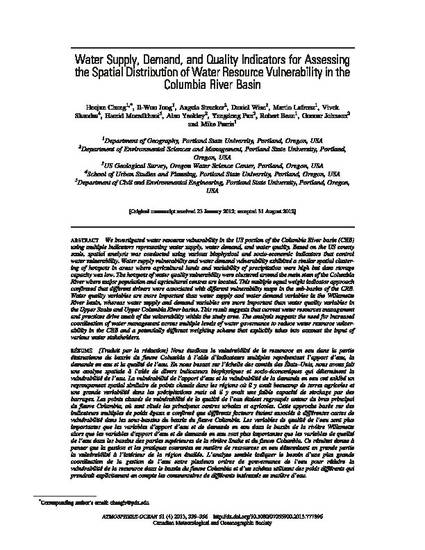
- Water supply,
- Water demand management,
- Water quality,
- Water -- Distribution,
- Columbia River
We investigated water resource vulnerability in the US portion of the Columbia River basin (CRB) using multiple indicators representing water supply, water demand, and water quality. Based on the US county scale, spatial analysis was conducted using various biophysical and socio-economic indicators that control water vulnerability. Water supply vulnerability and water demand vulnerability exhibited a similar spatial clustering of hotspots in areas where agricultural lands and variability of precipitation were high but dam storage capacity was low. The hotspots of water quality vulnerability were clustered around the main stem of the Columbia River where major population and agricultural centres are located. This multiple equal weight indicator approach confirmed that different drivers were associated with different vulnerability maps in the sub-basins of the CRB. Water quality variables are more important than water supply and water demand variables in the Willamette River basin, whereas water supply and demand variables are more important than water quality variables in the Upper Snake and Upper Columbia River basins. This result suggests that current water resources management and practices drive much of the vulnerability within the study area. The analysis suggests the need for increased coordination of water management across multiple levels of water governance to reduce water resource vulnerability in the CRB and a potentially different weighting scheme that explicitly takes into account the input of various water stakeholders.

This is the publishers final PDF.
To the best of our knowledge, one or more authors of this paper were federal employees when contributing to this work. Published by Taylor & Francis, and available at: http://dx.doi.org/10.1080/07055900.2013.777896